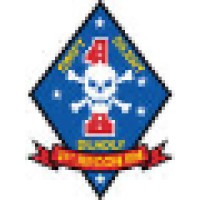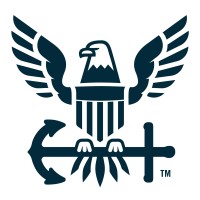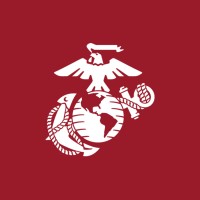
1st Reconnaissance Battalion, USMC Company Cyber Security Posture
marines.mil1st Reconnaissance Battalion (abbreviated as 1st Recon Bn) is a reconnaissance battalion in the United States Marine Corps, 1st Marine Division, I Marine Expeditionary Force (I MEF). The following are examples of missions outlined to 1st Reconnaissance Battalion: • Plan, coordinate, and conduct amphibious-ground reconnaissance and surveillance to observe, identify, and report enemy activity, and collect other information of military significance. • Conduct specialized surveying to include: underwater reconnaissance and/or demolitions, beach permeability and topography, routes, bridges, structures, urban/rural areas, helicopter landing zones (LZ), parachute drop zones (DZ), aircraft forward operating sites, and mechanized reconnaissance missions. • Infiltrate mission areas by necessary means to include: surface, subsurface and airborne operations. • Conduct counter-reconnaissance. • Designate and engage selected targets with organic weapons and force fires to support battlespace shaping. • Conduct limited scale raids and ambushes.
1RBU Company Details
1st-reconnaissance-battalion-usmc
10,001+ employees
0
928
Armed Forces
marines.mil
Scan still pending
1ST_4226487
In-progress
Between 800 and 900
This score is AI-generated and less favored by cyber insurers, who prefer the TPRM score.
 1RBU Global Score
1RBU Global Score.png)

1st Reconnaissance Battalion, USMC Company Scoring based on AI Models
| Model Name | Date | Description | Current Score Difference | Score |
|---|---|---|---|---|
| AVERAGE-Industry | 03-12-2025 | This score represents the average cybersecurity rating of companies already scanned within the same industry. It provides a benchmark to compare an individual company's security posture against its industry peers. | N/A | Between 800 and 900 |
1st Reconnaissance Battalion, USMC Company Cyber Security News & History
| Entity | Type | Severity | Impact | Seen | Url ID | Details | View |
|---|
1st Reconnaissance Battalion, USMC Company Subsidiaries

1st Reconnaissance Battalion (abbreviated as 1st Recon Bn) is a reconnaissance battalion in the United States Marine Corps, 1st Marine Division, I Marine Expeditionary Force (I MEF). The following are examples of missions outlined to 1st Reconnaissance Battalion: • Plan, coordinate, and conduct amphibious-ground reconnaissance and surveillance to observe, identify, and report enemy activity, and collect other information of military significance. • Conduct specialized surveying to include: underwater reconnaissance and/or demolitions, beach permeability and topography, routes, bridges, structures, urban/rural areas, helicopter landing zones (LZ), parachute drop zones (DZ), aircraft forward operating sites, and mechanized reconnaissance missions. • Infiltrate mission areas by necessary means to include: surface, subsurface and airborne operations. • Conduct counter-reconnaissance. • Designate and engage selected targets with organic weapons and force fires to support battlespace shaping. • Conduct limited scale raids and ambushes.
Access Data Using Our API

Get company history
.png)
1RBU Cyber Security News
Marines aiming to lessen the cybersecurity burden for forces in the fight
The newly minted deputy commandant for information wants commanders in the field to not have to worry about cyber threats, allowing them to focus on the fight.
Why the Marine Corps should adopt the M10 Booker
The M10 Booker could also play a key command-and-control role on the battlefield. It could be adapted as a hub for the Marines' Network-On-The- ...
Key naval information warfare organizations receive new bosses
Key naval information warfare organizations receive new bosses. Lt. Gen. Melvin Carter assumed his new role as deputy commandant for information ...
Marine Corps creates first ‘Network Battalion’ for cyberdefense and modernization
The Marine Corps' newest battalion is a first-of-its-kind group of cyberwarriors activated to defend and modernize the enterprise network that ...
BeCyberSmart: Cyber War — Understanding & Mitigating Cyber Threats to U.S. Business [Part 1]
McAfee & Taft cybersecurity and privacy attorney Joshua Snavely talks with special guests Donnie Hassletine and Sonia Arista about the current threat landscape.
First Marine Battalion Gets ‘Eyes in the Sky’ Mini-Drones
InstantEye is considered a Group 1 UAS, or sUAS, a category of small aerial drones that are small enough to be carried in a pack and operated by ...
ASD(A) Cyber Warfare and U.S. Indo-Pacific Command Convene Workshop to Discuss Cyber Chall
The event focused on cybersecurity standards for operational technology, critical infrastructure cyber threat landscape and interdependencies ...
Former Marine, cyber exec Nate Fick selected as State’s inaugural cyber ambassador
The cybersecurity executive, former Marine and author Nathaniel Fick has been selected as the State Department's inaugural ...
Congratulations to the 2023 Copernicus Award Winners
Plain text · No HTML tags allowed. · Lines and paragraphs break automatically. · Web page addresses and email addresses turn into links ...

1RBU Similar Companies

U.S. Air Force Reserve
The Air Force Reserve is an integral component of our Nation's air defense and military support network. Reservists bring knowledge, skills and expertise from their civilian experiences to support critical missions and training around the globe, while working alongside their Active Duty Air Force me

United States Marine Corps
The United States Marine Corps (USMC) is a branch of the United States Armed Forces responsible for providing power projection, using the mobility of the United States Navy, by Congressional mandate, to deliver rapidly, combined-arms task forces on land, at sea, and in the air. The U.S. Marine Corps

Brazilian Navy
Mission : "To prepare and use the Naval Power, in order to contribute to the Defense of the Homeland; to guarantee the constitutional powers and, on the initiative of any of them, of law and order; to fulfill the subsidiary attributions provided for by Law; and to support the Foreign Policy". Futur

Minnesota National Guard
The Minnesota National Guard is a joint force of citizen Soldiers and Airmen that serve our state and nation with the Governor as their Commander in Chief, assisting during disasters and other emergencies. In times of war, Minnesota National Guard Soldiers and Airmen can be called into federal activ

US Navy
The United States is a maritime nation, and the U.S. Navy protects America at sea. Alongside our allies and partners, we defend freedom, preserve economic prosperity, and keep the seas open and free. Our nation is engaged in long-term competition. To defend American interests around the globe, the U

Marine Corps Recruiting
This is the Official LinkedIn Page of Marine Corps Recruiting. We make Marines. We win our nation's battles. We develop quality citizens. These are the promises the Marine Corps makes to our nation and to our Marines. The core values that guide us, and the leadership skills that enable us, not on

Frequently Asked Questions
Explore insights on cybersecurity incidents, risk posture, and Rankiteo's assessments.
1RBU CyberSecurity History Information
How many cyber incidents has 1RBU faced?
Total Incidents: According to Rankiteo, 1RBU has faced 0 incidents in the past.
What types of cybersecurity incidents have occurred at 1RBU?
Incident Types: The types of cybersecurity incidents that have occurred include .
Incident Details
What are the most common types of attacks the company has faced?
Additional Questions
What Do We Measure?
















Every week, Rankiteo analyzes billions of signals to give organizations a sharper, faster view of emerging risks. With deeper, more actionable intelligence at their fingertips, security teams can outpace threat actors, respond instantly to Zero-Day attacks, and dramatically shrink their risk exposure window.
These are some of the factors we use to calculate the overall score:
Identify exposed access points, detect misconfigured SSL certificates, and uncover vulnerabilities across the network infrastructure.
Gain visibility into the software components used within an organization to detect vulnerabilities, manage risk, and ensure supply chain security.
Monitor and manage all IT assets and their configurations to ensure accurate, real-time visibility across the company's technology environment.
Leverage real-time insights on active threats, malware campaigns, and emerging vulnerabilities to proactively defend against evolving cyberattacks.




